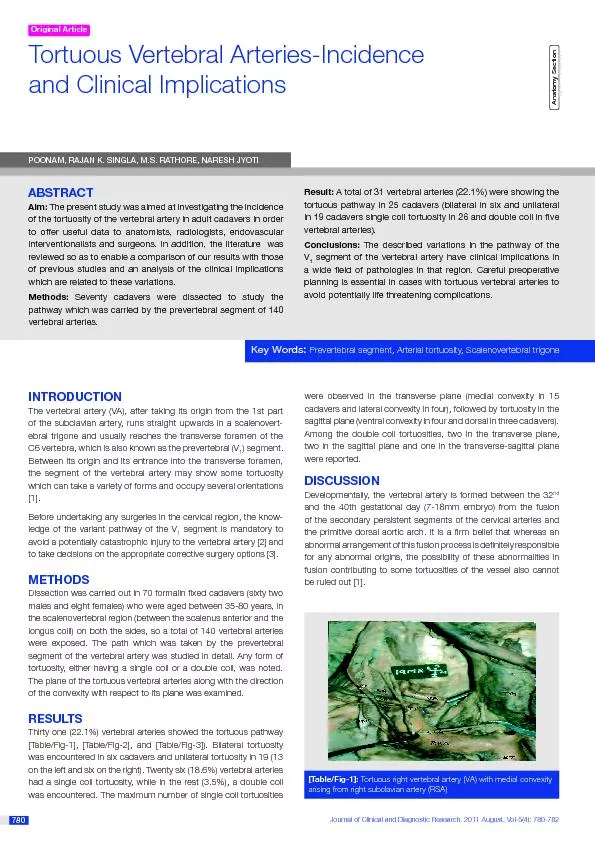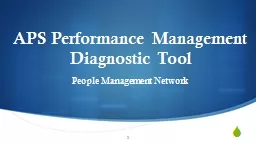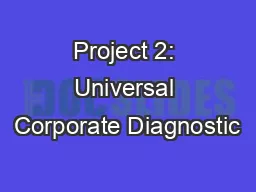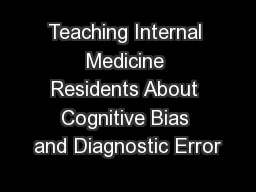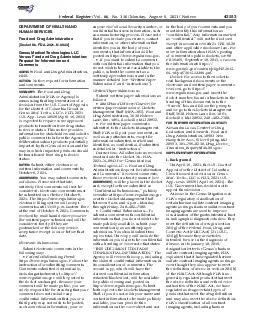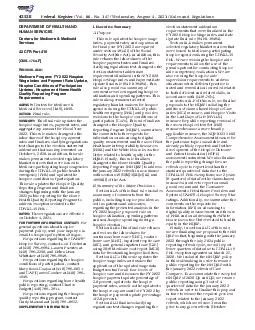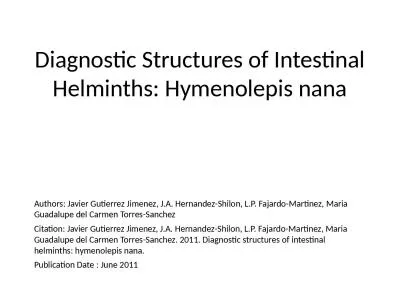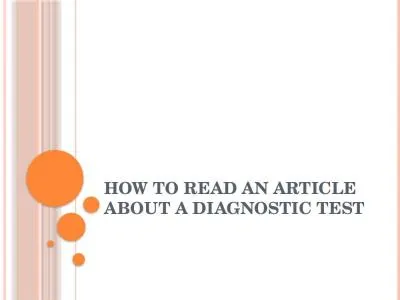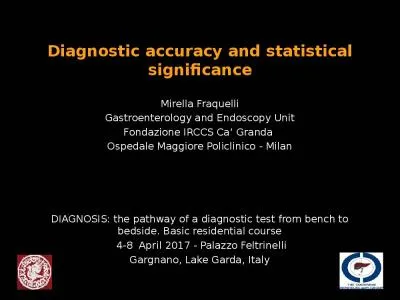PDF-Journal of Clinical and Diagnostic Research. 2011 August, Vol-5(4): 78
Author : alida-meadow | Published Date : 2016-08-14
780 780 Tortuous Vertebral ArteriesIncidence Key WorPrevertebral segment Arterial tortuosity Scalenovertebral trigoneThe present study was aimed at investigating
Presentation Embed Code
Download Presentation
Download Presentation The PPT/PDF document "Journal of Clinical and Diagnostic Resea..." is the property of its rightful owner. Permission is granted to download and print the materials on this website for personal, non-commercial use only, and to display it on your personal computer provided you do not modify the materials and that you retain all copyright notices contained in the materials. By downloading content from our website, you accept the terms of this agreement.
Journal of Clinical and Diagnostic Research. 2011 August, Vol-5(4): 78: Transcript
Download Rules Of Document
"Journal of Clinical and Diagnostic Research. 2011 August, Vol-5(4): 78"The content belongs to its owner. You may download and print it for personal use, without modification, and keep all copyright notices. By downloading, you agree to these terms.
Related Documents

